Spinach, also called true spinach, vegetable spinach or garden spinach, is ideal for use as a leaf vegetable.
Use in the kitchen:
The tender spinach leaves harvested in March can also be eaten raw. Later, the stem becomes a little woody and the leaves taste more bitter. These spinach leaves are usually used cooked as a vegetable. Spinach is also suitable as a vegetable ingredient in pasta, rice, casseroles or quiche. Pureed into a thick soup, it is served with potatoes (and eggs) in traditional German cuisine.
Stews or curries can be refined with a spinach topping. Blanching the garden spinach softens the slightly metallic, bitter, astringent taste and reduces the nitrate content. The water-soluble nitrate remains in the cooking water. Unfortunately, important ingredients are also lost.
| Not only vegans or vegetarians should read this: Vegans often eat unhealthily. Avoidable nutritional errors. |
Shopping:
Leaf spinach is available in every supermarket. If possible, look for organically produced vegetable spinach. Spinach is in season in the western regions of Europe between February and May. When grown in greenhouses, real spinach can also be found from domestic production until November (D, A, CH). Outside of the season, you can use frozen spinach.
Found in the wild:
Green (Good) Henry ( Blitum bonus-henricus, syn.: Chenopodium bonus-henricus) is still known today as wild spinach. Like garden spinach, it also belongs to the Amaranth family.
It can be found throughout Central Europe and also in eastern North America. It has many uses: the young, not yet flowering leaves can be used as spinach, the shoots, which are about 12 cm long, can be used as asparagus. The flowers are steamed like broccoli. In the Balkans, the crushed rhizomes (roots) are used to make candy that resembles peanut butter.
Storage:
Spinach should not be stored at room temperature for too long, a maximum of one week. Whether raw or cooked, the nitrate it contains (non-toxic in this form) is converted by bacteria into nitrite.
If you want to store spinach for a longer period of time (up to about 10 months), we recommend briefly blanching it, quenching it in ice water and then freezing it.
Ingredients - nutritional value - calories:
Spinach contains vitamins such as pro-vitamin A, vitamin C, E and K. Spinach contains iron, but not in as high a quantity as originally thought. However, even after the correction to 2.71 mg/100g, spinach still contains more iron than almost any other vegetable. 500 g practically cover the daily iron requirement. Peas and beans contain almost twice as much iron or more, as do wild vegetables, spices, dried foods, etc., but these are consumed in small quantities. 2 Garden spinach also surpasses meat and the high vitamin C content increases absorption. 3
Spinach is also characterized by other minerals such as manganese, magnesium and folate (folic acid). Compared to many other leafy vegetables, real spinach is rich in plant proteins, with 2.3% 2 to 2.86% 3. Spinach is probably the most nutritious leafy vegetable known, although it only has 22 calories per 100 g. 3 100 g of spinach contains 194 µg, almost the daily requirement (200 µg) of folate as a folic acid-active substance group, and about half the daily requirement of vitamin A (retinol equivalent), namely 469 to 672 µg out of 1000 µg. 3 See the ingredient tables (nutrient tables) as a link above or open below this text.
The bioavailability of carotenoids depends on factors influencing the food and its preparation and processing. The factors influencing the food itself are the subject of current research and cannot be influenced by the consumer. 4 They include, among other things, the location (chromoplast vs. chloroplast, etc.), the presence and type of soluble dietary fiber, the hydrophobicity of the carotenoids and the interactions of various representatives such as lycopene, lutein, etc. 5,6,7
On the other hand, careful preparation of a food can noticeably increase the absorption of carotenoids. Factors such as adding fat, chopping or cooking increase their accessibility and thus their absorption. 8 Chopping plays the biggest role here. 4,8 Although fat always increases the absorption of carotenoids, it is much more efficient to chop the food up (chew it well, puree it, etc.). When it comes to fat intake, natural fats such as nuts ( macadamia, walnuts, etc.) or avocado are sufficient. 4 You should avoid additional oily additives or butter, as they do not achieve better results in terms of bioavailability and do more harm than good.
Cooking helps to destabilize the cell walls and thus also contributes to availability, but at the same time destroys heat-sensitive ingredients such as many B vitamins or vitamin C. 4,8
Health aspects:
The antioxidants contained in spinach are said to have a cancer-preventing effect. The provitamin A (beta-carotene) and the carotenoid lutein contained in spinach have a positive effect on the eyes 11. A comprehensive study by the Massachusetts Eye and Ear Infirmary and Harvard University (USA) has shown that 55- to 80-year-olds who regularly eat spinach are much less likely to suffer from a loss of vision due to degenerative changes in the retina than their peers. 3 Fresh leaf spinach juice is extremely effective against anemia and is highly recommended for all athletes and young people of growing age. Half a glass a day ensures optimal effects. 3
Dangers/Intolerances:
Raw spinach contains oxalic acid, the amount of which depends on the age of the leaf, among other things. Young leaves contain less oxalate. Oxalic acid, which breaks down into water, carbon monoxide and carbon dioxide when heated to over 150 ºC, can be harmful to health. Certain minerals such as calcium form complexes that are difficult to dissolve, making them difficult to absorb through the intestines. Oxalic acid also attacks tooth enamel and, in large quantities, contributes to the formation of kidney stones. Nevertheless, eating foods containing oxalic acid in reasonable amounts does not pose a threat. By comparison: according to Wikipedia, the lethal dose of orally ingested oxalate is 600 mg per kg of body weight, which corresponds to around 4.5 kg of raw spinach for a 60 kg person.
If too much nitrogen is used, which is particularly common in greenhouses, spinach accumulates nitrate. If the nitrate is converted to nitrite, this impairs the transport of oxygen in the body. This is particularly dangerous for children. If cooked spinach is reheated or kept warm for a long time, the nitrite present can form carcinogenic nitrosamines.
Folk medicine:
Spinach leaves were originally used as a remedy for flatulence and as a fever reducer for inflammation of the lungs and intestines. The seeds were used as a laxative, but also helped with respiratory problems, liver inflammation and jaundice. Spinach is also said to help with loss of appetite and tiredness. The hypoglycemic properties of real spinach are also mentioned in popular wisdom. 12
Occurrence - Origin:
The origin of spinach is not clear. It is believed to have originated in Southwest Asia from the wild spinach species Spinacia tetrandra Stefen ex M.Bieb. and Spinacia turkestanica. A precursor to our modern spinach was cultivated in Persia as ispanāğ. The Arabs brought it to Spain as isbanāh, where it was first mentioned as espinaca in the 9th century. Spinach did not reach Central Europe until the 13th century. Today, spinach is cultivated as a vegetable plant in temperate zones around the world. 1
Cultivation, harvest:
The annual herbaceous plant has upright, yellowish to pale green stems and reaches a height of 50 to 100 cm. At first the leaves are arranged in a rosette, later alternately on the stem. Spinach tastes best when it is as young as possible. When the plant forms flowers and later seeds, the leaves are no longer as fine and tender. The plants are very susceptible to caterpillars, leaf miners, lice and bugs. Molds such as Cladosporium and mildew are also common. When growing, make sure to keep the plants far apart and check regularly for pests.
Spinach plants only need short day conditions. Plants sown in August can be harvested in late autumn and winter. If harvested in spring, sow in September or in open ground from mid-March. In the event of severe frost, the spinach plants should be covered. High nitrogen fertilization (including manure) promotes nitrate accumulation in the spinach plants.
General information:
Spinach ( Spinacia oleracea) belongs to the Amaranthaceae family, more precisely to the Chenopodiaceae subfamily. The genus ( Spinacia ) also includes two other species: Spinacia tetrandra is found in the Caucasus and Western Asia and Spinacia turkestanica is widespread in Central Asia and India.
The main producing countries worldwide are China, the USA, Japan and Turkey. In Europe, spinach is mainly grown in Italy, France and Germany. Due to its short shelf life, most of the spinach harvest is sold as a frozen product.
In addition to being used as a direct food, spinach is also used as a coloring agent for foods such as pasta. The chlorophyll from the spinach mat contained in the leaves serves as a green food coloring. This chlorophyll is also added to mouthwash and serves as a neutralizer for odor-producing products.
The original misconception that spinach contains excessive amounts of iron is based on two different assumptions. In 1890, the Swiss scientist Gustav von Bunge correctly calculated that 100 g of dried spinach contained 35 mg of iron. These figures were incorrectly applied to fresh spinach, which only contains about a tenth of the iron. 9 The second assumption is based on an accidentally misplaced decimal point, but this has never been proven. 10
Literature - Sources:
Bibliography - 11 Sources
| 1. | Deutschsprachige Wikipedia. Spinat. |
| 2. | USDA: US-Amerikanische Nährwertdatenbank. |
| 3. | Pamplona Roger J.D. Heilkräfte der Nahrung. Zürich: Advent-Verlag; 2006:36 |
| 4. | A. M. B. Priyadarshani. (2017) A review on factors influencing bioaccessibility and bioefficacy of carotenoids, Critical Reviews in Food Science and Nutrition, 57:8, 1710-1717 |
| 5. | Castenmiller, J. J. M. and West, C. E. (1998). Bioavailability and bioconversion of carotenoids. Annu. Rev. Nutr. 18:19–38. |
| 6. | Yeum, K. J. and Russell, M. (2002). Carotenoid bioavailability and bioconversion. Annu. Rev. Nutr. 22:483–504 |
| 7. | Unlu, N. Z., Boh, T., Clinton, S. K. and Schwartz, S.J. (2005). Carotenoid absorption from salad and salsa by humans is enhanced by the addition of avocado or avocado oil. J. Nutr. 135:431–436. |
| 8. | Hedrén, E., Diaz, V. & Svanberg, U. (2002) Estimation of carotenoid accessibility from carrots determined by an in vitro digestion method, Eur J Clin Nutr 56, 425–430 |
| 9. | Sutton M. Spinach, Iron, and Popeye: Ironic lessons from biochemistry and history on the importance of healthy eating, healthy scepticism and adequate citation. Internet Journal of Criminology. 2010. |
| 10. | Hamblin TJ. Spinach - I was right for the wrong reason. Mutated Unmutatex Blogspot. 2010;12. |
| 12. | abcde Spinacia oleracea bei Plants For A Futur |

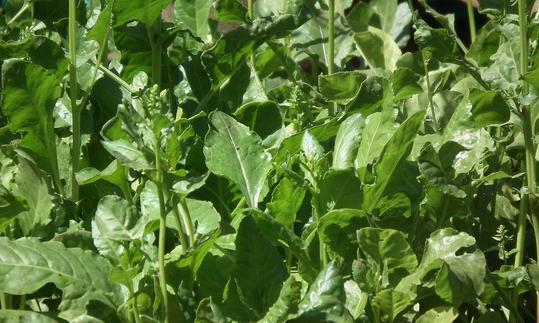

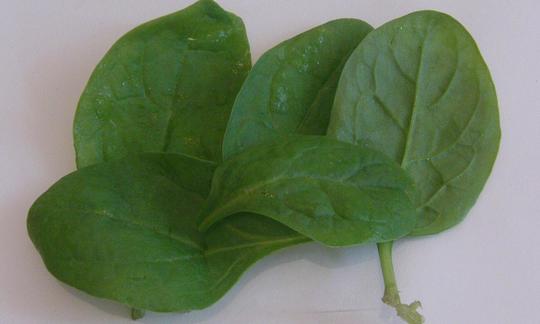

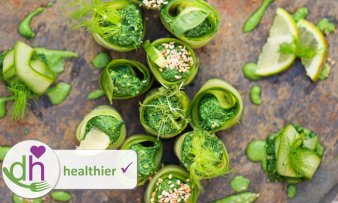
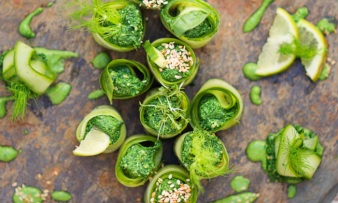
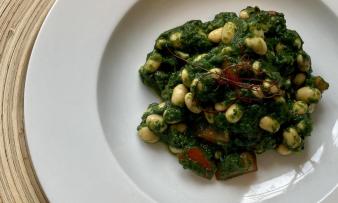





Comments